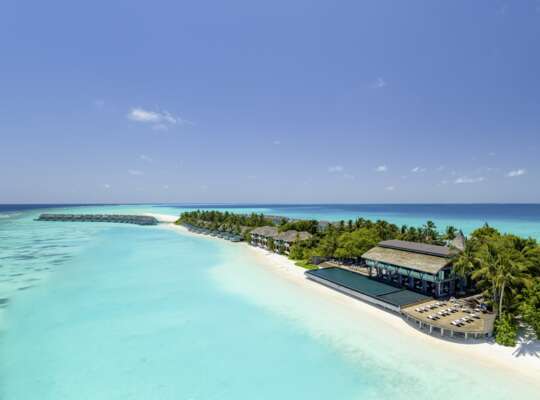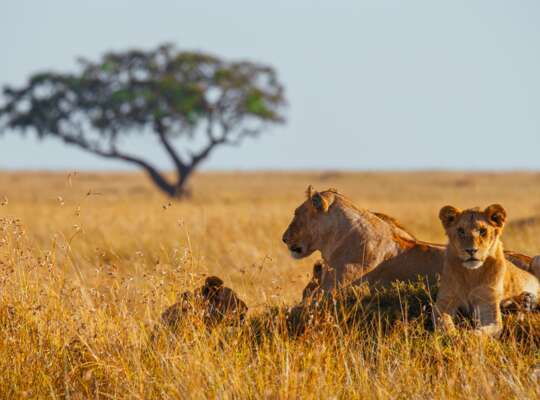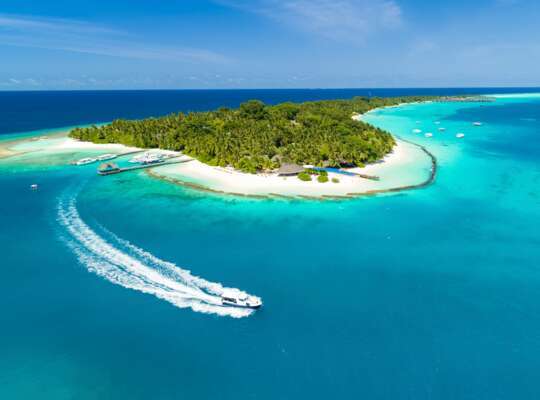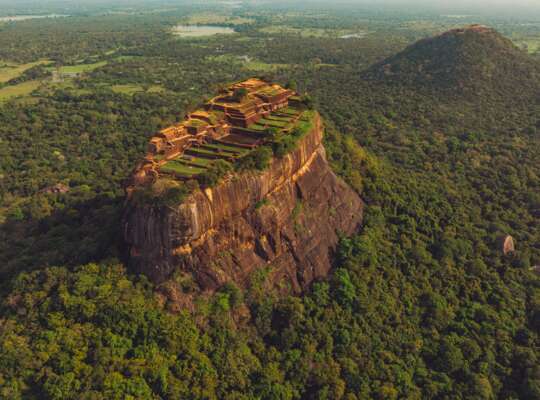A safari is one of the most exciting holidays you’ll ever have. But before you’re sipping sundowners and spotting elephants, there are a few things you’ll want to know. Do you just sit in a jeep all day? How early are the starts, really? And when they say pack light, how light are we talking?
Nicola from our Kuoni Metrocentre team is fresh back from Kenya and she’s got answers. From dusty drives and dreamy lodges to hippo wake-up calls and smart packing tips, here’s what she learned.
Where did you go, when, and how long for?
An 11-day trip in May, based on our Big Five small group safari itinerary with a beachy bonus at the end.
Why Kenya for a safari?
It’s got everything you’d want in a safari holiday: widescreen views, big wildlife moments and guides who know the land like the back of their hand. Then there’s the Swahili culture and white-sand beaches lapped by the Indian Ocean. It’s a fantastic choice for a first safari, and one that still sets the bar high for every trip after.
What does a typical day on safari look like?
You’re up around 5.30am, with a strong coffee before heading out on your first game drive. That’s when the animals are active and the light’s ideal for photos. You’ll be back mid-morning for a cooked breakfast then it’s time to read on your deck or cool off with a swim (if your lodge has a pool). Just don’t switch off completely – you might spot an elephant grazing nearby or monkeys up to mischief.
Around 4pm, it’s back out for another game drive, often ending with a golden hour drink – maybe beside a marsh where buffalo wallow or watching giraffes silhouette in the sunset. Evenings are quiet, with dinner back at camp and a night full of bush sounds.
Some days are a bit different, especially if you're travelling between parks or out on a full-day game drive, but you’ll still have early starts, amazing wildlife and plenty to take in along the way.
What were your top pinch me moments?
My absolute highlight was coming face to face with one of Tsavo’s ‘Big Tuskers’ (rare bull elephants with massive tusks). Our guide was scanning the bush when we turned a corner and there he was, staring straight at us. It was emotional, awe-inspiring – and easily the best 20 minutes of my life! Then there was the hot air balloon at sunrise with views over Mt Kilimanjaro – it’s a must if you're marking a special occasion.
Any unexpected joys?
The night safari was incredible. It was just us, our guide and spotter, driving through the pitch black, nothing but the hum of the engine and the sounds of the bush. We caught a lion at a watering hole, eyes glinting, then looked up to find the Milky Way in full glow.
Most mouthwatering meal on safari?
I’m pescatarian, so I wasn’t expecting much – I thought it would be all about the meat. But the food really surprised me: loads of fresh salads, fruit and beautifully cooked fish. My favourite meal was by the coast in Watamu – a plate of juicy langoustines with ocean views. Delicious and such good value.
Favourite stays?
I loved Porini Amboseli Camp, Selenkay Conservancy. The camp’s off-track and unfenced, so it really feels like you’re in the middle of the wild, and there’s a strong focus on conservation and community. The tents were far more luxurious than I expected and the off-road drives brought us strikingly close to the wildlife.
Voyager Ziwani Tented Camp in Tsavo National Park was another standout. It sits on a dam where hippos doze during the day and emerge after dark, which meant we had a ranger walk us back to our tent at night. The food was excellent, the team couldn’t do enough for us and the guided bush walk was a brilliant way to learn more about the land.
Is it worth visiting more than one national park in Kenya?
Definitely. You see and experience so much more when you move around – the landscapes change fast. Tsavo’s dry and dramatic with red-dust plains and volcanic ridges; Amboseli’s green and wide open, with wetlands fed by Kilimanjaro. And of course there’s the Maasai Mara, classic savannah and big cat country.
How did you travel between places?
We travelled with a local guide in a comfy, 4x4 safari vehicle. Some of the drives were long and bumpy, but that’s travel in Kenya – and I enjoyed watching everyday life roll past the window. We took the train from Amboseli to Mombasa, a more local, adventurous way to link safari with the beach.
Who is this kind of small group safari best suited to?
It’s a great fit if you want a safari that’s well-timed, good value and full of highlights. The group’s never more than 12, split between two vehicles, so it still feels personal. It suits couples, solo travellers or families with older children (16+) who’ll take the early starts and longer drives in their stride.
To beach or not to beach?
Definitely beach. A few days by the ocean is a great way to wind down. We started on the Mombasa coast, then headed north to Malindi and Watamu – low-key, no-frills spots with soft sands, chic resorts (Diamonds Malindi was my favourite) and easy snorkelling trips. Zanzibar’s also a popular choice after a Kenya or Tanzania safari.
Don’t miss…
Even a short stop in Nairobi can be time well spent. Step inside the former home of famed author Karen Blixen, get eye-level with giraffes at the Giraffe Centre or unwind by the pool before the adventure begins.
Good to know
• UK plugs are in most places – no adaptor needed
• When’s best? Kenya is a year-round destination so it depends what you want to see – check our best time to visit Kenya guide
• Tipping is appreciated – around $10-20 per day for your guide is the norm
Nicola’s safari packing tips
Packing for safari is a minefield, but Nicola’s got it down to a T. Here's her quickfire guide…
Pre-safari checklist
• Visit your travel clinic for the most up to date advice
• When you travel to Kenya you’ll need to take malaria medication – start before you travel and always with food
• Apply for your e-visa at least two weeks before
• Bring printed copies of key documents (visa, travel insurance, itinerary, just in case Wi-Fi fails)
• Buy a 15kg soft bag, no wheels – safari vehicles are tight on space and you’ll carry it more than you think.
Dressing for safari: what you really need
If you’ve watched Out of Africa or Born Free, you may imagine yourself floating through the savannah in crisp white linen. The reality? It’s hot, humid, dusty and nobody cares what you look like. And by day two… neither will you. You’ll likely wear the same outfit day and night, so comfort’s key. Pack:
• Loose trousers, floaty shirts, neutral colours
• Old trainers and comfy sandals
• A wide-brim hat
• A rain mac – you might welcome a quick downpour
• A warm layer and light jacket (wear on the plane to save space)
• One clean outfit for the flight home (it’ll feel like luxury)
Day-to-day lifesavers
• Compression packing cubes
• Reusable water bottle
• Ear plugs – for those night-time rustles and roars
• Old rucksack – it’ll live on the jeep floor
• Cross-body bag for essentials
• Portable phone charger
• Sunglasses (the red dust gets everywhere – leave the designer pair at home)
Toiletry heroes
• Travel-size high-factor suncream
• Mosquito repellent
• Antibac wipes and hand gel
• Rehydration sachets
• Old-school toothbrush (lighter on weight)
• Minimal makeup — the dust will undo it anyway
Beach extras
Keep these zipped away till you reach the coast.
• Swimsuit
• Lightweight, loose clothes
• A decent pair of sandals
Final thoughts from Nicola
On safari, bring a sense of adventure, a bit of patience and an open mind. You never quite know what you’ll see – and neither do your guides – but that’s all part of the magic. It wasn’t just the wildlife that made it special, but the people too. I left a little piece of my heart in Africa and I’ll definitely be back.
Inspired?
Talk to our Africa experts to start planning an unforgettable safari holiday.
This feature was updated on 18th June 2025. The information within this feature is correct to the best of our knowledge at the time of publication. Feature by Heather Flanagan







_w=24_h=25.png?v=0711214b111132f9ec4aa60f03855b0564f12bfc)
_w=24_h=25.png?v=0711214b111132f9ec4aa60f03855b0564f12bfc)
_w=24_h=25.png?v=0711214b111132f9ec4aa60f03855b0564f12bfc)